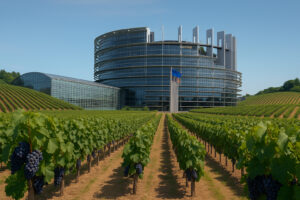“Population projections for 2025 show that more than half the population in developing countries (3.5 billion people) live in urban areas. The leaders and city planners of poor countries will be confronted with the challenge, “greener cities” which has been up to now a concept generally associated with urban planning of industrialized countries. This concept could represent a great opportunity to ensure healthy and nutritious food, sustainable livelihoods and better health”. The FAO study explains that the challenge is to change course from the unsustainable urbanization in force, by promoting greener cities that offer residents opportunities, choice and hope. FAO says that experiences of urban and peri-urban horticulture are following this direction. Over the last decade, the governments of 20 countries have requested FAO’s assistance to provide incentives, input and training to low-income urban gardeners. FAO has also provided tools, seeds and training to start thousands of school gardens in more than 30 countries, which has proven a great way to promote nutrition for children.
According to the study, “the progressive expansion of urban areas to make way for new buildings and infrastructure destroys precious agricultural land each year, while production of fresh food is increasingly being pushed to the rural areas. The costs of transport, packaging and refrigeration, the poor condition of rural roads and the losses incurred in transit affect the price and are responsible for the reduced availability of fruit and vegetables on urban markets”. “Historically, the city,” said Shivaji Pandey, Director of FAO Plant Production and Protection of plants, “has always been a place of opportunity, employment and generally better living conditions. In many developing countries, however, rapid urban growth has not been caused by economic opportunity but rather by high birth rate and the rural population trying to escape hunger, poverty, and insecurity”.
FAO says that in 2020, the proportion of urban population living in poverty could rise to 45%; i.e., 1.4 billion people. By that time, 85% of poor people in Latin America and about half in Africa and Asia will be concentrated in urban areas. This perspective has been described as the new “demographic bomb” and a nightmare to manage and govern: cities that extend out of proportion, degraded and impoverished, with a large population of vulnerable, socially excluded, young and unemployed people.
Cultivating the land in the city or the suburbs is not a new idea: the Inca citadel of Machu Pichu in Peru included a residential area and a terraced area for intensive cultivation. FAO estimates that there are over 130 million urban people involved in agriculture in Africa and over 230 million in Latin America. These cultivations are mainly vegetables, which provide food for families and income from the sale of products. ”Urban horticulture offers a way out of poverty”, Pandey adds, citing the low initial cost to start, short production cycles and high yield per unit of time, land and water used.
“In the city cheap food is often of poor quality,” - FAO continues, “with a high content of fats and sugars, and therefore responsible for the increased level of overweight and diet-related chronic diseases such as diabetes and obesity. Growing fruit and vegetables - the largest natural sources of micronutrients - in urban areas increases the availability of fresh produce and nutritious food and improves access to the poorest of the population”.
Copyright © 2000/2025
Contatti: info@winenews.it
Seguici anche su Twitter: @WineNewsIt
Seguici anche su Facebook: @winenewsit
Questo articolo è tratto dall'archivio di WineNews - Tutti i diritti riservati - Copyright © 2000/2025








































































































































































































